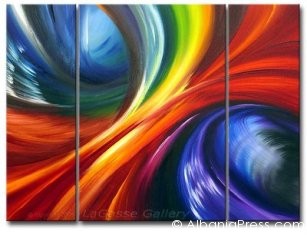Better defined as a visually distinguished created either by outlines or by color.
Thru shape perception is thee ability to be able to recognize figures from ground,
showing that SHAPE is a defining element. Showing a simple contrast between a lighter color against a darker color, like the letters that are being typed on this blog against a different color background.
Your able to see the shape of the letter, helping u to distinguish one from another.
As shown in figure (A), u can see how shapes form to display a recognizable character, also using color..
 |
| EX:-A- 2012 Bubble. Digital image. Colourbox.com. Web. <http://www.colourbox.com/preview/2950086-134035-3d-new-year-2012-shape-on-black-and-white-background.jpg> |
But with in the 3-D aspect, the terms Volume & Mass are applied.
Basically to sum up, painting have shapes an sculptures have mass.
As seen in the sculpture in (B)..
 | ||
| EX:-B- Quinn, Marc. WHite Sphinx. Digital image. Vogue.co.uk. Web. <http://cdni.condenast.co.uk/240x360/k_n/kmossMarcQuinnSwhiteB.jpg>. |
Thru exaggerated shapes, NATURALISM is manifested.
With DISTORTION effect, shapes are exaggerated in a playful manner.
Such technique is used by Caricaturist who create Caricatures.
Tho they twist an stretch, thus altering a person features.
The main parts of the character remains true to show distinctive details for a viewer to recognize an see who that picture is resembling. As seen in (C) of a Caricature..Can u guess who that pic is of, before looking at the photo's caption?
 |
| EX: -C- Robin Williams. Digital image. Binscorner.com. Web. <http://static.binscorner.com/n/new-funny-caricatures-of-famous-people/128671706798.jpg>. |
Distortion an Expression,
Also stretch shapes for more then a humorous caricature purpose,
Mostly use to emphasis the designers point of interest to get it across to the viewer.
But there is another type of specific artistic distortion called IDEALISM.
This form, reproduce the world not as so, but seemingly the way society of generations view in saying how they believe it to be.
A form of this is seen in fig. (D)
 |
| EX:-D- Gonzalez, A. Angel Flurish. Digital image. Http://ursispaltenstein.ch/blog/images/uploads_img/a_gonzalez.jpg. Web. <http://ursispaltenstein.ch/blog/images/uploads_img/a_gonzalez.jpg>. |
Another specific kinda artistic distortion is called ABSTRACTION,
since no artist cant recreate nature or human figure to its genuine perfection, any artwork can be called abstract. But mostly this term is referred to projects which
has been toned down to its simplest form an shown its important shapes to relay the final project. Many use abstract for more intense or subtle effect.
Here is an examples of abstract work as seen in (E)
 |
| EX:-E- Colors in Design. Digital image. Albaniapress.com. Web. <http://www.albaniapress.com/fotot/lajme_foto/jan_10/4907941.jpg> |
Now in the form of NON-OBJECTIVE artwork.
This term better suites works of art work that represent Pure Forms an shapes.
Where in this picture below in, (F) you can see the objects an shapes not forming
anything of regular or exact geometrical size. But, more exaggerated thru
the artist mind bringing this abstract painting to a different sense of uniqueness.
As also seen in a style called CURVILINEAR design. Where thee artwork presents more of a curved design instead of straighter line. Shown in (G)..
 |
| EX:-G- Kinetic Design. Digital image. Rubensteinstudios.com. Web. <http://www.rubensteinstudios.com/images/projects_sm/Infinity%20Front%2072dpi.jpg>. |
Most of these Curved-style artwork was more presented in the late 19th century form of artwork called Art Nouveau. Which put more emphasis on curvy lines an shapes within an artist artwork or painting. Now thee opposite of this style would be considered, straight edges an lines forming more of rectangles an squares, better known as RECTILINEAR.
But when dealing with another form of SHAPES there are POSITIVE & NEGATIVE Shapes,
which would cause the main focal point of an object within the artwork to be the positive shape, an the emptiness within the background to become the negative, since its open an nothing is taking up its space besides the fore-mention object.
Here's an example of positive&negative in a design piece, as seen in (H)..
AS u can see the Plane in a white positive light, an the black in the background is considered the negative space. Also with positive an negative spaces using the format of isolation or integration, helps to Frame a picture or artwork better to see a more vivid
picture as a whole, instead of objects just placed anywhere on the canvas.
 |
| EX:-H- Cass, Jacob. Bomber Plane. Digital image. Layersmagazine.com. Web. <http://media.kelbymediagroup.com/layersmagazine/images/tutorials/design/photoshop/57/figc.jpg>. |

No comments:
Post a Comment